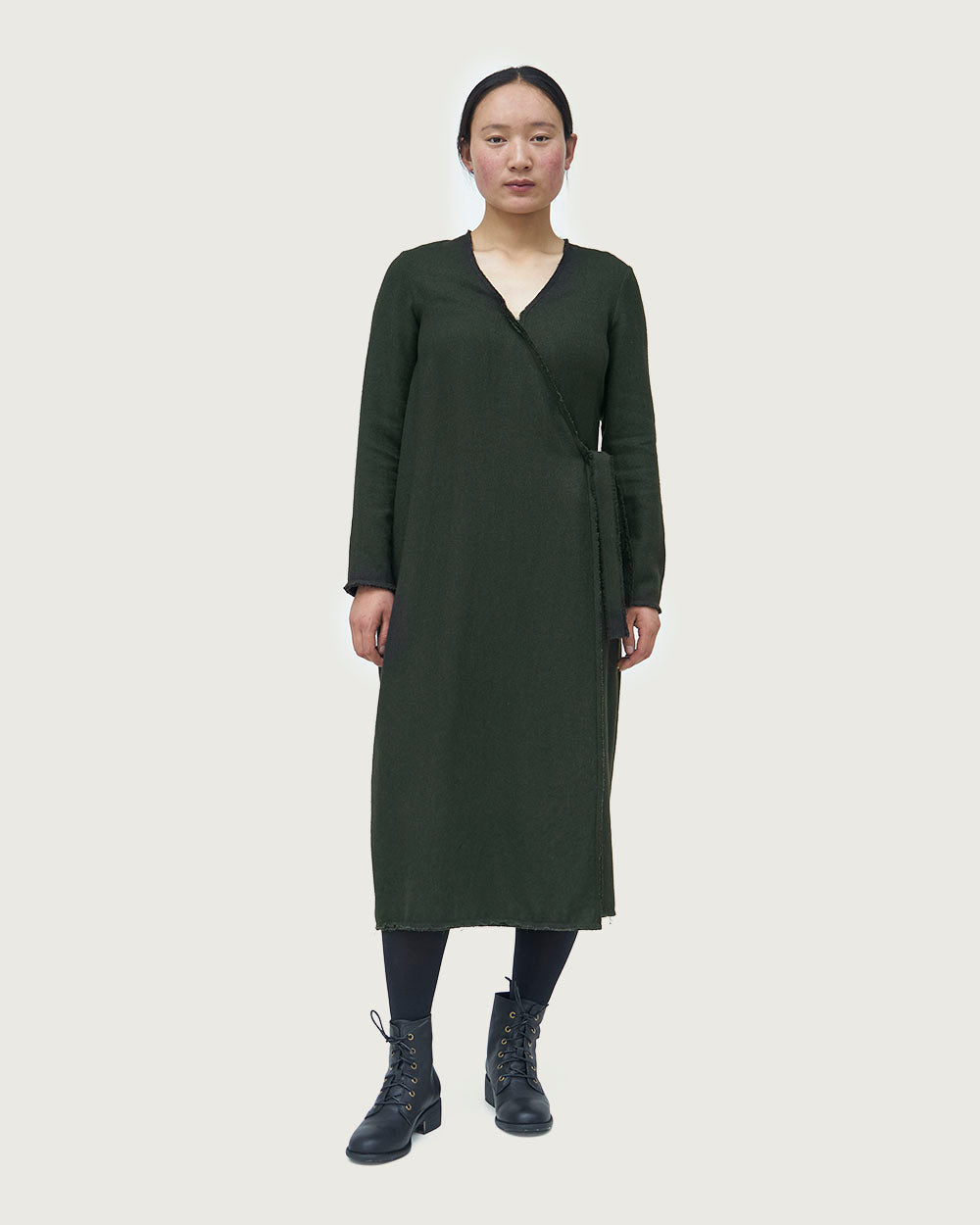The Chuba
|
This winter, our wear collection features styles inspired from the chuba, the Tibetan universal dress. This unisex garment, found all over the Tibetan Plateau has roots deep in Central Asia, with early examples illustrated in the Dung Huang murals and scrolls from the Tangut Empire. The chuba is a floor length, left crossing loose garment that is adjusted at the waist with a wide, usually red cloth belt, and pulled up to different degrees according to sex, rank or region. It is an extraordinarily adaptable garment worn by town dwellers, farmers, nomads, men and women alike and is equally wearable on horse or motorcycle. This explains its enduring, century-defying popularity over the whole of the Tibetan Plateau. The chuba can be worn different lengths, and the shorter the chuba, the more voluminous is the pouch resulting from the overhanging material used to hold babies, lambs or travel snacks. Women wear their chuba ankle length, while men mostly pull them up the mid-calf or above the knee. Tibetan weather is fickle and temperatures can rise and fall within minutes. The chuba lends itself to adjustments with the top part taken off and rolled into the belt, in styles that differ from region to region. Size also varies per region and occupation; nomads and men from Kham and Amdo wear roomier chubas with sleeves that hand down to the ground, while Central Tibetans favor smaller garments, some, especially officials, more tightly fitting ankle length ones to better fit their clerical activities. In the later part of the 20th century, a new, simplified women’s style of chuba that originated in India became the rage in Lhasa; precut to include the belt, it is more tightly fitting and usually sleeveless. Women in Kham and Amdo tend to stick to the larger, traditional style, which is accessorized with silver belts and other waist ornaments, though the Lhasa chuba is also popular as summer dress. The shape of the chuba lends itself to a wide variety of materials; brocade, sheepskin, or wool. Nomads all over the plateau wear sheepskin chubas, bordered in colorful strips of felt, with shirts only added in the last thirty years. Brocade from China, Russia, and more recently India, where Muslim communities copied ancient patterns at the demand of Tibetan traders, was used by aristocrats and wealthy merchants in Central Tibet. Farmers and traders preferred the traditional hand spun and woven fabric of which there are many qualities, from coarser to finer, the latter being highly prized and extremely costly. Winter wear was lined in fine lambskin and borders often ornamented with otter fur. Nowadays, most chubas are made from industrial wool cloth or Chinese brocade and fur has been discarded, replaced with brocade borders. Each generation had its style of wear, though nomads still like their sheepskin chubas for winter; Khampa men in the 50’s favored oversized pants made from Assam silk, or buray, which they twisted around to keep them from dragging on the ground. Now, chubas are accessorized with down jackets, baseball caps and expensive running shoes, using the same layering techniques used for centuries, to a more contemporary effect. While town women wear their chubas floor length with pumps or high heel boots, farmers and nomads double them over trousers, using their pouch to hold their cellphone and belt to hang their flashlights, sling and to tuck up their chuba, allowing them to chase after cattle or work in the fields. Strangely, platform shoes are still preferred, even to trudge on the pasture. In addition to the chuba inspired garments in Norlha’s winter collection, Norlha has developed traditional Amdo style for men and women, woven from yak khullu wool fabric. The appreciation for fine fabrics has returned and people are willing to invest important sums for a piece they plan to cherish for many years to come. |



















